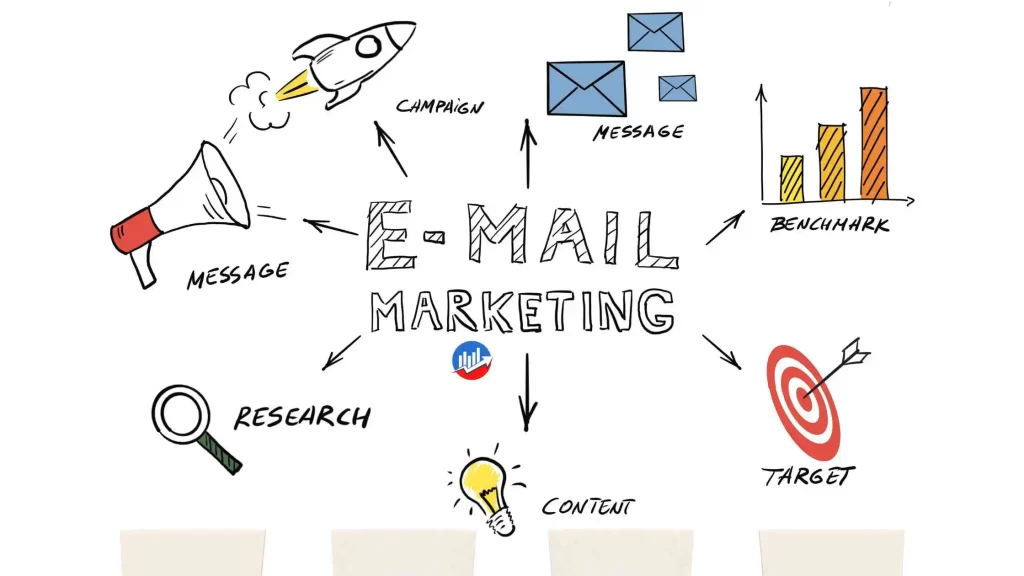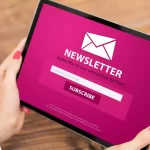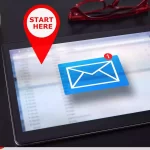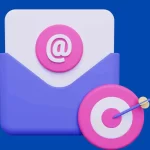You acquired a new email contact in the database, a new prospect, and what do you do with it, learn the 7 types of Email Marketing messages that work like magic…
A contact you don’t send anything to doesn’t get you anything.
What to convey to folks who have been reading your messages for months?
Maybe they are tired of the same thing all the time, and their openness is decreasing.
Don’t despair. In this article, we’ll examine the “normal” email from various distinct aspects.
Here are seven sorts of messages you may send to your recipients to urge them to purchase from you.
1. Welcome emails
Welcome emails are intended to offer feedback to the prospect that they have filled out the form properly.
An automaton frequently sends this sort of communication. He will do it depending on filling out a form to acquire some type of magnet (brochure, series of advice, videos) or merely to subscribe to the newsletter.
You have a unique chance to introduce yourself in the initial message you send to a person. You may also write what follows next. How frequently and what information will you send him?
According to statistics, Welcome emails have the greatest open rates since the prospect has actively requested them and is thus most likely to receive them in their inbox.
So it pays to adorn them appropriately. And I don’t simply mean graphics. Graphics will please, but no one will sit on her ass.
It is basically fascinating and intelligible literature. Just like on a first date, present yourself in a positive light and start creating trust in yourself and your goods and services.
What to send in welcome emails:
- Confirmation of subscription to the newsletter
- Link to the promised magnet
- Quick introduction
- Info about what’s to come
- Question on recipient
2. Content emails
The objective of content messaging is to enhance the connection between you, your brand, and the receiver.
The receiver gave a contact. You have it in your database and presumably don’t want to let it lay idle. You wish to contact him frequently.
But by the word communication, nearly no one imagines that you instantly compose a sales text in an email with an excellent promotional offer.
If you start presenting your bedroom on the first date, you could succeed, but the relationship generally won’t continue long.
You will attain a better outcome by sending some value to the prospect. You can envision virtually anything beneath it. Very very informative information. Something that the receiver can instantly accept put into practice, and obtain some results.
You will demonstrate that you understand your area. Telling him that your messages are worth reading. You are developing a position of trusted authority. You’ll whip out your sales pitch when the timing is perfect.
If you are not a text expert, then forget about sales in this type of message.
The advantage should be predominantly on the side of the consumer, the interested party. You will “get nothing” from the content messages. This is how content communications vary from sales messages.
What to send in content emails:
- Link to a new article, video tip, presentation, or infographic
- News in legislation
- Useful industry tip
- Customer story
- Sales experience
3. Sales emails
Oh well, you may finally sell.
This form of reporting gives benefits to both parties. The consumer receives a terrific product or service, and you get sales and a new line item.
This sort of communication includes all those who “hard sell”. Feel free to mix in scarcity, urgency, and other selling components. By this “manipulation,” you will boost the success of your transaction.
They claim nobody likes these emails. But you will discover the truth on the order list.
Why would you perform email marketing if you weren’t going to sell?
Even sales may be made well.
It will work when you segment your prospects and monitor what they are interested in, then personalize your sales presentation appropriately.
If you fire offers (and any other messages) head-on, you will not accomplish tremendous outcomes.
I have had multiple meetings with the sort of entrepreneur who indicated he did not want to send such emails. Everyone sends them, and he doesn’t want to be one of the crowd. After all, it has a superior product that consumers will find.
It’s like people staring at your window. You would gaze back and be quiet. A few individuals may decide, but there won’t be any great outcome.
Customers need to be fulfilled. If you’re not sending sales emails, you’re basically shooting yourself in the foot.
What to send in sales emails:
- Special offers
- New goods in the assortment
- Sales
- Limited time offers
4. FAQ – Frequently requested questions
The most well-known types of messages are behind us, and we can delve into the unusual.
Posting responses to commonly asked questions is not that often. But it works well.
Take the queries you hear from your consumers to hand. Your replies to them will persuade other purchasers.
Whether you have answers for your items on the web or not, don’t expect everyone to come and read them. Better to put things under people’s noses and point them out loud.
It’s fantastic to know what’s going through people’s thoughts before they interact with you, work with you, or purchase one of your items. Thanks to this, you may change your marketing and sales and concentrate on what is vital to your consumers.
You already know everything you have already purchased.
Behind every question, there are hundreds of individuals who haven’t asked it. And that’s why questions and answers are a terrific option for the subject of one of your future emails.
But in order to be able to compose such an email, of course, you need to know what people are inquiring about. And where to look? With your salesmen, customer support employees, the assistant who answers your phone, or your email.
What to send in FAQ emails:
- Answers to frequently asked questions
- What is the warranty?
- How does it work when…?
5. Transactional Emails
The purpose of these emails is to guide the prospect or customer through a process, whether it is ordering a product or processing a service request.
One should always have an overview of what is happening. If he has submitted an order, he expects an email confirmation with further instructions on how to proceed.
Suppose he joined up for a membership program, the same. If he submits a request or question to your customer service, he again requires proof that you have registered it and when you will address it.
That’s what transactional emails are for. The consumer has to have an overview. Otherwise, he gets uneasy and does not know what will happen.
So it is up to you to digest this “practical knowledge” clearly and comprehensibly. But this does not imply that there is no place for a little innovation in them. The open rate of these emails is high. Therefore, you may put in the footer a suggestion for a different product or more information the client might be interested in.
What to send in transactional emails:
- Confirmation of order receipt and payment
- Sending the acquired digital product,
- Receiving a customer support request
- Instructions for utilizing the product
6. Case studies, references
Case studies and testimonials are a mix of a content email offering value and a sales email.
Using a case study, you describe a particular instance to interested parties and how your product benefitted a specific client. How did your collaboration go, or how did you go in solving the order? How it appeared before your cooperation, what transpired, and what it provided to the consumer.
The great advantage of a case study is the fact that it is a genuine client, and you will exhibit actual outcomes. So forget about colouring the findings somehow. They are simple to check, and if it turns out that you lied, thumbs down.
What is the additional value of such emails? If the “praise” of your product is entirely one-sided, you have no substantiation for your claim. But when you present the genuine outcomes of your consumers, it’s a whole other scenario.
And after the case study, there is an opportunity to offer a link to acquire this product of yours.
What to send in Case of studies, references emails:
- Text references of delighted customers
- Links to video references
- Case studies
- Mentions of your person or firm in the media
7. Feedback
You would undoubtedly agree with me that feedback is quite vital for any marketer.
Nobody appreciates comments when they learn the hard way where to put a product. I don’t mean this.
How about finding out what people think about your items? How they view them. What do they take favourably and adversely about them?
Who is better to ask than the people who are your prospective consumers in your mailing database?
You may ask the question clouds. Feel free to ask: Why didn’t they purchase your product? Why didn’t they pay for the order? What were they missing? What would they want instead?
Honest replies are worth their weight in gold. You’ll receive a fresh viewpoint and utilize it to fine-tune your future campaigns and marketing efforts to obtain greater outcomes.
Use survey software to construct a brief or lengthy survey and distribute it to your contact database.
Or ask directly in an email and encourage others to react.
What to send in feedback \ survey emails:
- Questionnaires
- Questions
- Surveys
Conclusion
Here you have seven types of emails. Even if you send them every day, they will practically never grow weary.
- You will deliver a fresh subject on Monday
- You will provide a valuable suggestion on Tuesday
- You will sell aggressively on Wednesday
- You will answer the question on Thursday
- Thank you for your orders on Friday
- Send a referral on Saturday
- On Sunday, you will ask what to do next
When you believe it’s crap, remember that the top email marketing gurus send messages 365 days a year.
Of course, there may be more of those types of emails. (Can you think of one? Drop it in our Facebook group!)
You may also mix different types. The main idea is to know that there are several types and then simply utilize them.
You will either expend your brain energy each time coming up with a theme for the next email, or you will follow a pre-prepared script and concentrate just on the content.





